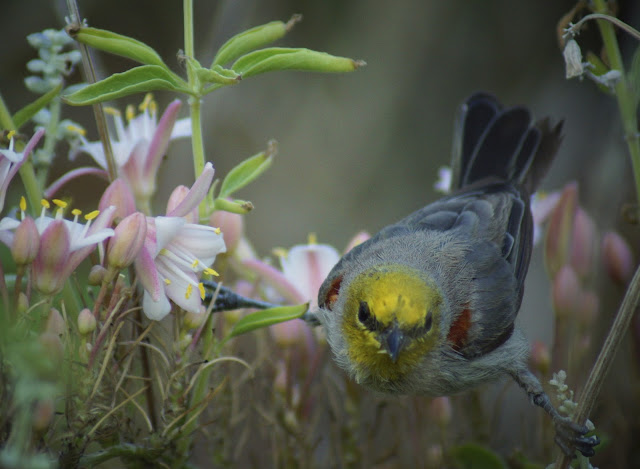Birding on Sundays is a delicate business. Sunday is the day when I have to do all of the work I put off doing on Friday and Saturday. Sunday is also my Sabbath day (a good reason not to procrastinate on Friday and Saturday). The English Premier League (soccer) has started. Also Sunday is a great day to have dinner with the family. It's a busy day, so Sunday morning belongs not just to the early birds, but to the early birders. While the initial push to get out of bed at 5 am is difficult, it does have its own rewards. The sun rises much more elegantly in the morning than I do, and it's really something to see.
Of course, it's pretty common for birders to get up at all manner of uncivilized hours so they can gear up and hit the road for maximum birding. It's just harder to do on Sundays when you know you won't have a day after when you can catch up on your sleep. Even so, I've never had a morning of birding that would've been better spent sleeping.
This Sunday I had two stops, the first at the Desert Botanical Garden for better photo opportunities and the second at the Glendale Recharge Ponds for a vagrant Roseate Spoonbill. While the opportunities to see new or unusual birds at the DBG come few and far between, it's still one of the best places in Phoenix for nature photography, combining the desert's birds and blooms in one compact little park.
And then there are those non-indigenous interlopers like the Rosy-faced Lovebirds, everyone's favorite invasive species. They were surprisingly terse on Sunday, dare I even say laconic!? Usually they're squawking up a storm, more garrulous even than a gang of grackles.

In the morning, the Lovebirds are most often found catching the early-bird special around the Sunflowers and Mesquite trees at the DBG. They are joined, and in fact greatly outnumbered, by the humblest of finches, the Lesser Gold. Try as they might, they just don't have the brilliance of their American Goldfinch cousins.
They still catch the morning light well, and are plenty charming. But the number of times I've seen one of these yellow flashes in a tree and chased after a potential migrant Warbler is, well, embarrassing.
Considering it was still 5:30am at the DBG, the award for most vivacious and acrobatic bird goes to the Verdin. I'd submit they also deserve the overall prize for "Best in the Garden." This fella was demonstrating his Least Bittern impression. He's got the ability, but I don't know if he's got the look.
It was surprising to see young Curve-billed Thrashers, yellow gapes and all, still foraging under the large sumac trees (well, not surprising to see them foraging, just to see them at all). It seems too late in the summer for Thrashers to look this young, but if they don't mind then I won't mind. Come to think of it, it makes me rather glad.






